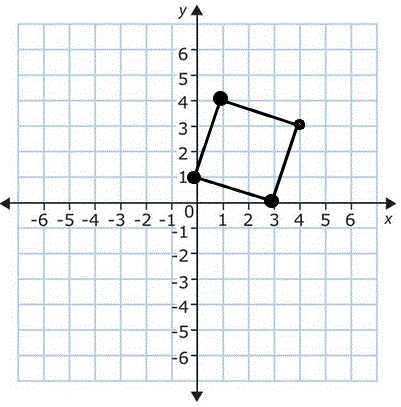 5) Rita wants to draw a square on a coordinate graph. The square is rotated a little bit around its center. She puts one vertex at (3,0), one vertex at (0, 1), and one vertex at (1, 4). Where will the last vertex go to complete the square? Use the coordinate graph provided.
5) Rita wants to draw a square on a coordinate graph. The square is rotated a little bit around its center. She puts one vertex at (3,0), one vertex at (0, 1), and one vertex at (1, 4). Where will the last vertex go to complete the square? Use the coordinate graph provided.
|
1. Plot the 3 points on the graph.
2. Determine the offset of the second point (0,1) from the first (3,0). This is going from point 2 to point 1.
The offset is (3,-1).
3. Apply this offset from the third point (1,4) to get the coordinates of the 4th point =
(1 + 3 = 4,4 - 1 = 3) = (4,3)
|